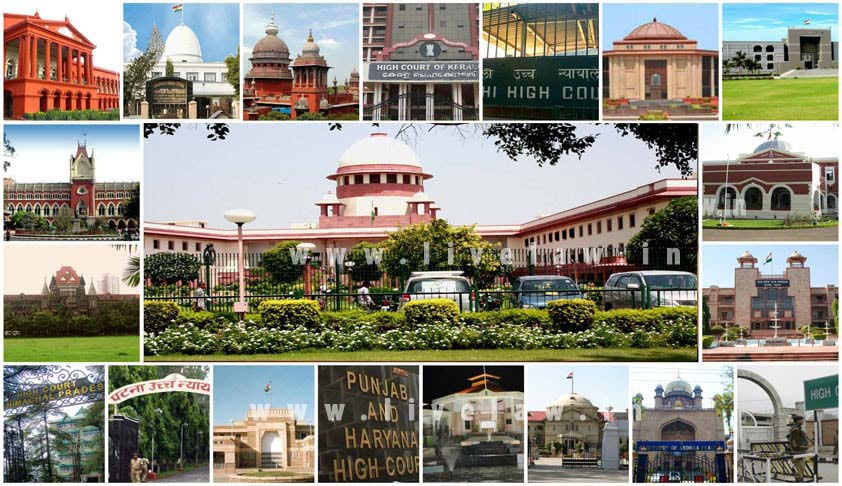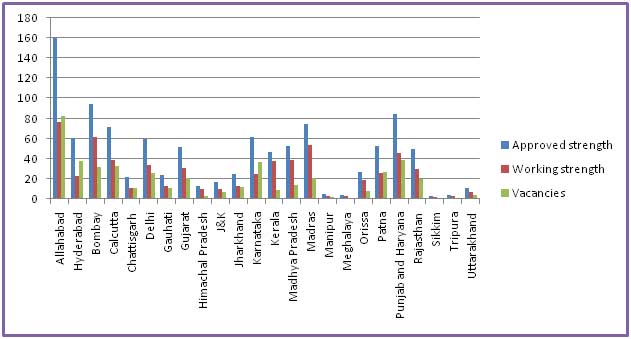- Home
- /
- Editors Pick
- /
- Govt, Judiciary Agree To Invoke...
Govt, Judiciary Agree To Invoke Art. 224A To Appoint Retd. Judges To High Courts
Apoorva Mandhani
6 Nov 2016 6:36 AM GMT
The Government and the judiciary have reportedly agreed to invoke Article 224A of the Constitution of India to appoint retired Judges with proven integrity and track record as Judges of High Courts, in order to tackle rising pendency.The decision was taken at the meeting of the Chief Ministers- Chief Justices Conference held in April and approved six months later. “Subject to...
The Government and the judiciary have reportedly agreed to invoke Article 224A of the Constitution of India to appoint retired Judges with proven integrity and track record as Judges of High Courts, in order to tackle rising pendency.
The decision was taken at the meeting of the Chief Ministers- Chief Justices Conference held in April and approved six months later. “Subject to integrity, suitability and performance of a person who has held the office as a judge of the high court, the provisions of Article 224 A can be invoked to deal with the extraordinary situation involving the large pendency of civil and criminal cases in the high courts,” minutes of the meeting stated.
The provision empowers the Chief Justice of the High Court, with previous consent of the President, to request any person who has held the office of a Judge of that Court or any other High Court to sit and act as a Judge of the High Court for that State.
As per the minutes, appointing retired Judges would in High Courts would aid in achieving ‘five plus zero’ pendency, which seeks to ensure that cases pending for more than five years are taken up on priority basis and pendency of such cases is brought down to zero level.
Further, the State Governments would be urged to increase the cadre strength of District Judiciary at the rate of 10 per cent per annum. States would also be asked to fill up vacancies of jail staff on a “mission mode” basis.
You may read: Article 224A: The Need of the Hour! by Varun Srinivasan
The Judiciary-Government standoff
A three Judge Bench of the Supreme Court, headed by Chief Justice of India T.S. Thakur, had recently accused the Government of “trying to starve out the cause of justice by not appointing Judges.”
Expressing anguish over the delay in appointments, despite recommendations made by the collegium in this regard, the Bench had asked, “Courts rooms are locked down. Do you want to lock down the judiciary?”
The Judiciary was especially exasperated over the delay in appointments to the High Court of Allahabad, which is currently functioning at less than 50 per cent of its approved strength. This was despite the fact that the collegium had cleared eight such appointments in January, and 27 in August. Karnataka High Court has been experiencing a similar situation, with several Court rooms locked due to the vacancies.
The Court’s observations were issued on two Public Interest Litigations seeking filling up of judicial vacancies in various Courts throughout the country. The Court made scathing observations, and almost summoned the Secretaries in the Prime Minister’s Office and Ministry of Justice during the hearing.
Attorney General Mukul Rohatgi however sought one more chance to “come up with something positive” by November 11, the next date of hearing, defusing the volatile situation and preventing the summoning of the top officials. You may read the LiveLaw article here.
Soon after the observations by the Supreme Court, Centre had insisted that even it was keen on expediting appointments but was hamstrung because of the SC's own directive to appoint Judges on the basis of the new Memorandum of Procedure (MoP).
“If the government had intended to stall, it would not have appointed 86 new judges to high courts, four to the Supreme Court, 14 chief justices of HCs and accepted the collegium's recommendations for transfer of four CJs and 33 judges from HCs since December last year. It also made permanent 121 ad hoc judges in HCs,” sources in the Law Ministry were quoted as saying.
“The government is keen to implement the five-judge bench's mandate to reinforce the MoP with transparency and objectivity. How long can appointments go on under a system held to be flawed by the SC's five-judge bench?” the source asked, referring to the Constitution Bench judgment of the Supreme Court, wherein it had directed the Government to draft a new Memorandum of Procedure [MoP] for appointment of High Court and Supreme Court Judges.
Not the first time
This was not the first time that the Chief Justice had lashed out at the Government over the issue of delay in appointments. Earlier in August, he had demanded a reason for the “mistrust”, saying, “The collegium has cleared 75 names of high court judges (for transfer/ appointment) but they have not been approved. I don’t know why, where these files are stuck.”
“I will take it up at the highest level and will come back to the court,” Mr. Rohatgi had then told the Bench and pleaded that no notice be issued for the time being in the PIL.
Not satisfied by Mr. Rohatgi’s repeated assurances, CJI Thakur had said, “Don’t force us to ask where the files are… don’t force us to judicially intervene… don’t try to bring this institution to a grinding halt… That’s not the right thing to do.”
It is to be noted that in April this year, during the National Conference of State Chief Justices and Chief Ministers, an emotional CJI Thakur had launched an unprecedented attack on the present and earlier Governments for often blaming the Judiciary for mounting backlog of cases, which touched an alarming 3.14 crore, but at the same time doing nothing to improve the number of Judges and increasing the number of Courts despite repeated pleas from the Judiciary.
Alarming judicial vacancies in SC and HCs
Vacancies in the High Courts of the country currently account for 42% of its approved strength. The following graph shows the approved strength, the working strength and the vacancies in the High Courts, as on November 1, 2016:
Out of the 24 High Courts, 15 are working on less than 65% of their approved strength, considerably waning the working capacity of the Judiciary.
Allahabad High Court has the largest number of vacancies, standing at 83. It is hence currently working at less than 50% of its approved strength, along with the High Courts of Hyderabad and Patna.
High Courts of Meghalaya, Tripura and Sikkim are functioning with 1 vacancy each. Further, even though Punjab and Haryana High Court has the second largest approved strength, it is working at 54% of that strength.
With the High Courts functioning at 58% of their approved strength, the dream for reducing the pendency of cases is unlikely to materialize in the near future.
This article has been made possible because of financial support from Independent and Public-Spirited Media Foundation.




